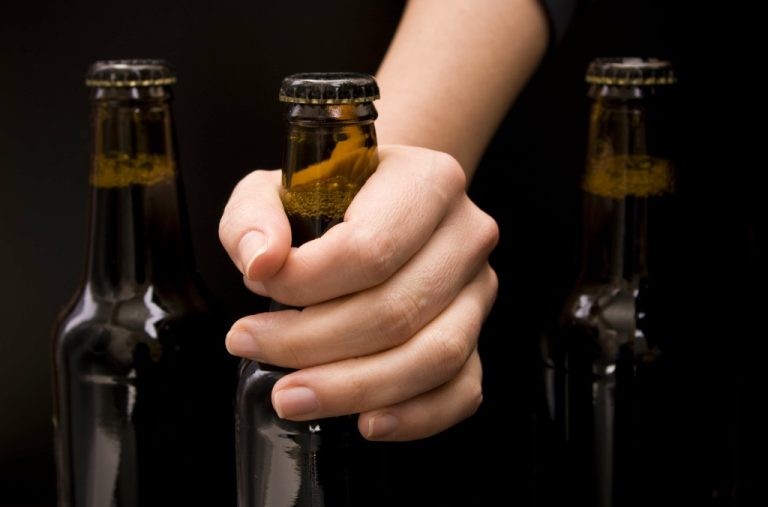Type 2 diabetes is the most common type of diabetes, accounting for 90 to 95 percent of cases of diabetes within the United States. Unlike type 1 diabetes, which is unpredictable and most often develops very early in life, type 2 diabetes can develop through a mix of personal and lifestyle factors. Both types are characterized by an inability to produce or regulate insulin in the body. Generally, eating a meal with your drinks is critical, and ideally, that meal would contain a few carbohydrates, too. For high-carb meals, you will need insulin for a large majority of those carbs. The more complicated the meal (hello lasagna or Chinese food, high in both fat and carbs), the more complicated dosing your insulin around that meal with alcohol onboard too will be.

For example, it is possible that participants would have generated different responses in the context of an individual interview, where they may be prompted to think about responses and consider a variety of drinking motives. A better understanding of the correlates of blackout experiences is expected to facilitate selection of both (a) tailored intervention content and (b) individuals for whom interventions may be most effective. They also tend to report higher perceived prevalence rates and greater perceived approval of drinking among their peers, as well as stronger enhancement motives for drinking (e.g., because it’s fun, because you like the feeling) (Merrill et al., 2016). However, few studies have examined intentions to experience alcohol-induced blackout.
Are Blackouts a Sign of an Alcohol-Related Problem?
In any case, alcohol use in both diabetics and nondiabetics can have deadly consequences without treatment. But you’re downtown with your friends and plan on having quite a few drinks, take your long-acting insulin as close to normal as possible without risking forgetting entirely. Will have essentially no noticeable impact on your blood sugars, especially if it means you made sure to take it before the night https://ecosoberhouse.com/ got too rowdy. Harris wants to remind us all again to keep track of how many drinks we’ve had, too, because the more you drink, the more work your liver has to do to process that poison. And that means more time spent with alcohol impacting your blood sugars, too. It’s crucial that you approach each type of alcohol with an awareness that it might affect you differently than the last type of alcohol you drank.
Although detailed data on alcohol use were collected prospectively in the ADVANCE trial, the current study is a retrospectively performed (post hoc) analysis. The current analyses are based on the consumption of alcohol at the time of randomization in the ADVANCE trial. This may not have accurately diabetes and alcohol blackouts captured the prior or subsequent behavior of the participants, and we are unable to assess the duration of alcohol consumption. In contrast to most other studies exploring the effects of alcohol, we have, however, reported the stability of alcohol consumption (both prior and subsequent).
It wears on your entire body.
Talk with your provider if you or someone you know with diabetes has an alcohol problem. According to one 2015 study, vasodilatory medications and diuretics could result in syncope blackouts. If a person believes that they are experiencing psychogenic blackouts, a doctor may refer them to a neurologist, who may be able to diagnose psychogenic blackouts by ruling out other causes. Since the Food and Drug Administration (FDA) approved them in 2019, doctors have been able to prescribe cenobamate tablets for adults who experience blackouts during seizures.

The medical term for blackouts is called transient loss of consciousness (TLOC). Researchers link that risk to the heavy drinking habits common among many college students. The first function, which involves most of the pancreatic cells, is the production of digestive enzymes. Those enzymes are secreted directly into the gut to ensure effective food digestion.
Symptoms Of Dangerous Drinking In Diabetics
Schuckit and colleagues (2015) used latent class growth analysis to evaluate the pattern of occurrence of alcohol-induced blackouts across 4 time points in 1,402 drinking adolescents between the ages of 15–19. Surprisingly, 30% of the adolescents reported experiencing an alcohol-induced blackout at the age of 15, which increased to 74% at age 19. However, what may be lesser known to nondiabetics is alcohol’s effects on insulin production, blood sugar or glucose levels, and its negative interaction with some diabetes medications. In this article, we’re going to look at how alcohol affects blood sugar levels, when it can become especially dangerous, and how to drink alcohol safely as a person with diabetes. The cellular mechanism by which a context is generated has been partially elucidated by observation of ‘place cells’ in rodents.
- Among other cell types, the Islets of Langerhans include an inner core of insulin-producing beta cells surrounded by a layer of glucagon-producing alpha cells.
- As a result, they may keep drinking and increase their risk of blacking out.
- Drinking to the point of a blackout has gained pop culture notoriety in recent years.
- For example, long-term alcohol use in well-nourished diabetics can result in excessive blood sugar levels.
- On average, the group reporting future blackouts intentions reported consuming ~5 more drinks per week, engaging in more frequent high-intensity drinking, and experiencing ~4 more alcohol-induced blackouts and 3–4 more other alcohol-related consequences in the past month.
Experts believe that when people are experiencing a threatening feeling, thought, or memory, it can overwhelm them so much that it induces a seizure. The National Institute of Neurological Disorders and Stroke estimate that 70% of people with epilepsy can control their symptoms by taking medication or undergoing surgery. However, just because a person has epilepsy, it does not necessarily mean that they will blackout when they have a seizure. A disturbance of neuronal activity in the brain can cause an epileptic episode. Alcohol is dehydrating by nature, so making sure you’re drinking plenty of water and staying hydrated is important. Being aware of potential signs of intoxication can also be helpful in understanding your limitations.
If it’s your first drink as a person with diabetes, start with one drink
Alcohol reduces blood levels of testosterone and may thereby further exacerbate the existing hormonal deficit. Clinical experience indicates, however, that a testosterone deficit rarely is the sole reason for impotence in diabetic men, because treatment with testosterone rarely restores potency in those men. Thus, both neuropathy and vascular disease likely play significant roles in impotence in diabetic men.
- A blackout ends when your body finally absorbs the alcohol and your brain can make memories again.
- The molecular mechanisms of the effects of alcohol on the hippocampus are not clear.
- Insulin resistance does not immediately lead to overt diabetes, because the patient’s pancreatic beta cells initially can increase their insulin production enough to compensate for the insulin resistance.
- Alcohol slows down activity in the brain and throughout the body and can cause numerous effects from a feeling of relaxation to drowsiness and decreased coordination.
- First, the data presented here were measured exclusively using self-report.
- We strive to create content that is clear, concise, and easy to understand.
- According to the University of California, San Francisco, one particular type of epileptic seizure that causes blackouts is a tonic-clonic seizure — also known as a grand-mal seizure.